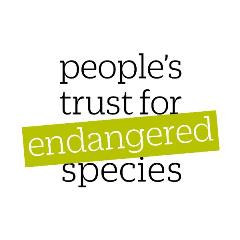Citizen science, conservation and a changing world
This post is greater than 6 months old - links may be broken or out of date. Proceed with caution!

With thousands of volunteers, communities and organisations collaborating across the country, citizen science is powering efforts to protect the natural world
David Wembridge (Mammal Surveys Coordinator), Laura Bower (Conservation Officer) & Emily Sabin (Water Vole Officer). Contact: enquiries@ptes.org
Wildlife conservation relies on an extraordinary workforce. Across the country, tens of thousands of local experts are walking along hedgerows and waterways, in community orchards and back gardens and over Ordnance Survey grid squares they barely know, collecting data on buds and birds, butterflies and bats, and doing the groundwork of conservation.
.%20Credit%20Iain%20Green.JPG)
Recording species and habitats as part of ongoing surveys is at the core of conservation, providing information about how our world is changing. We need to know what we’re losing, where and how quickly, and whether efforts to save it are working.
Citizen science—the collaborative, crowd-sourced endeavours between professional and non-professional scientists—has flourished in the last two decades or so, and nowhere more so than in environmental conservation. This year is the twenty-fifth anniversary of PTES’ Great Stag Hunt, which first collected records of stag beetles in 1998, and sees its Living with Mammals survey begin its third decade.
A comparative newcomer is the National Water Vole Monitoring Programme (NWVMP), which started in 2015. Water voles may be Britain’s fastest declining mammal, threatened by predation from American mink and loss of habitat and the drainage of wetlands. Since 1998, it’s estimated that the water vole population has halved, and keeping an eye on those that remain is critically important.
The NWVMP collects records of water voles at sites originally surveyed in the 1980s and 90s by the Vincent Wildlife Trust. Volunteers are allocated a site in their area and walk a 500m stretch of waterway between April and June. As well as water vole signs (and occasional sightings), signs of otters and mink are also recorded. This information feeds into part of a wider programme of conservation efforts that includes mapping water vole strongholds in the UK, reintroductions, and alerting local environmental record centres to the presence of water voles.

And water voles turn up closer to home, too. The importance of green (and blue) spaces in our towns and cities is increasingly recognised. For people and wildlife alike, they can be a refuge from wider pressures. For water voles, urban areas may have the advantage of fewer mink. A study from 2021 found records of water voles in around two-fifths of UK cities in the preceding decade, with rivers and streams within parks, sports grounds, and urban reserves, being the most valuable habitats.
Monitoring these spaces is important and Living with Mammals does just that, collecting records of mammals in gardens, allotments, recreational areas and other greenspace, to build a picture of how the abundance and distribution of wild mammals are changing.

The online survey runs throughout the year, with a focus in spring and autumn, recording weekly maximum counts and signs. To date, around 4,000 people have taken part, and its findings have informed reports such as the UK Natural Capital accounts and the State of Britain’s Hedgehogs.
Another denizen of gardens and urban greenspace is the stag beetle, whose larvae feed on rotting wood in the soil for up to six years. PTES’ Great Stag Hunt runs every year, collecting incidental records of stag beetle adults and larvae in the UK. Last year (2022), over 11,100 sightings were recorded, just short of the record 16,000 in 2020. These build a national picture of stag beetle distribution and, over time, show whether its range is stable or changing.
PTES also collaborates in a Europe-wide survey to identify long-term trends in stag beetle populations more widely. The annual survey takes place in June and July, on a minimum of six warm, dry nights in the two-month period. Participants either count stag beetles along a 500m route or from a fixed point in a garden. To register an interest in the survey, visit the European Stag Beetle Monitoring website, www.stagbeetlemonitoring.org, or contact PTES.
Along with these, PTES runs surveys of traditional orchard, wood pasture and hedgerow habitats, coordinates the National Dormouse Monitoring Programme, and collects hedgehog records on the BIG Hedgehog Map—all relying on volunteers. The value of such data is in understanding how the natural world is changing. They’re central to informing conservation and policy, and without citizen scientists, conservation couldn’t be achieved.
But the value of volunteering and citizen science is also in the connection it makes between people and their environment. It raises awareness and fosters a sense of ownership and agency. It offers an opportunity to learn and, ultimately, the hope that the loss of the natural world can be turned round.
More from PTES